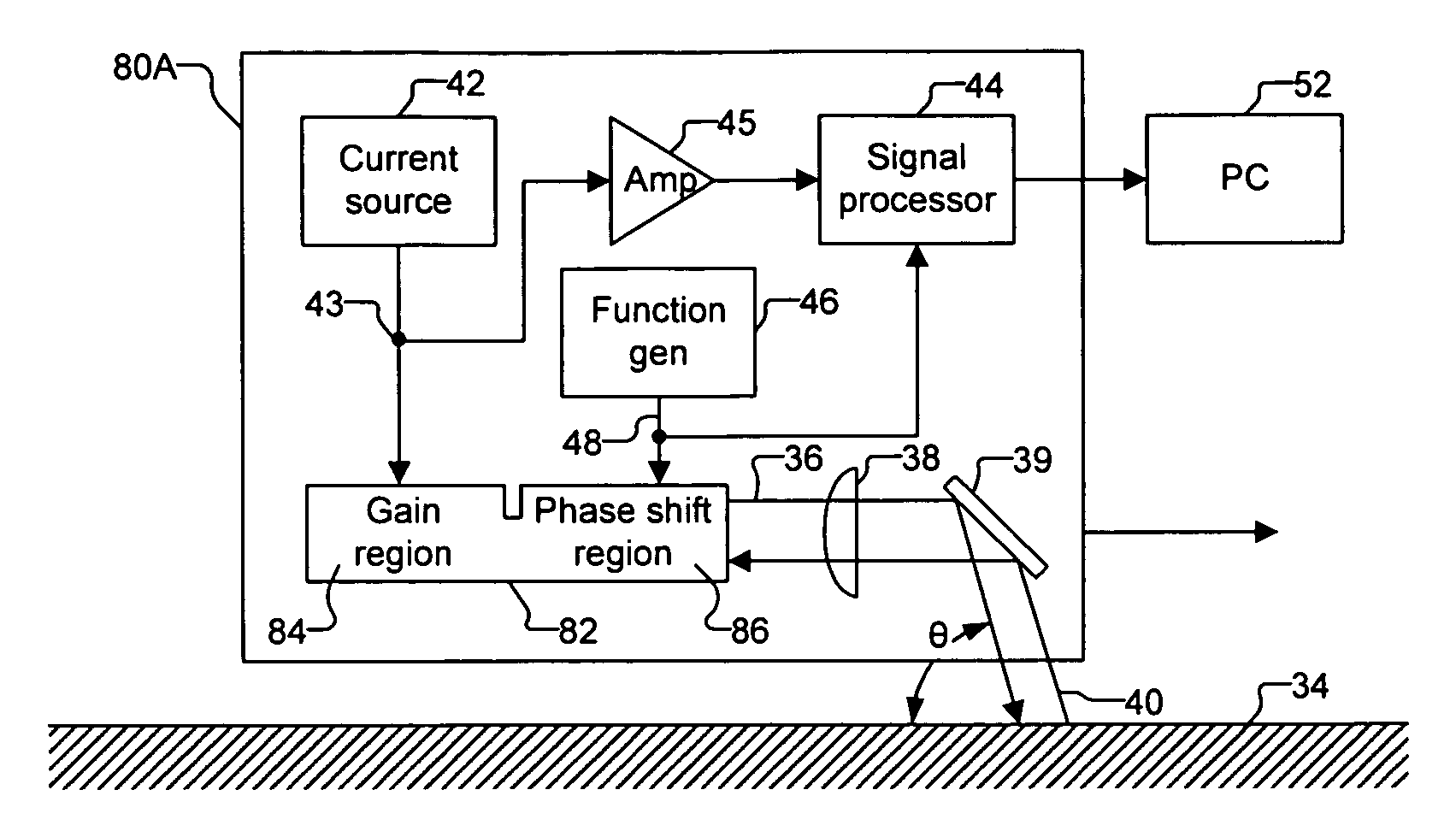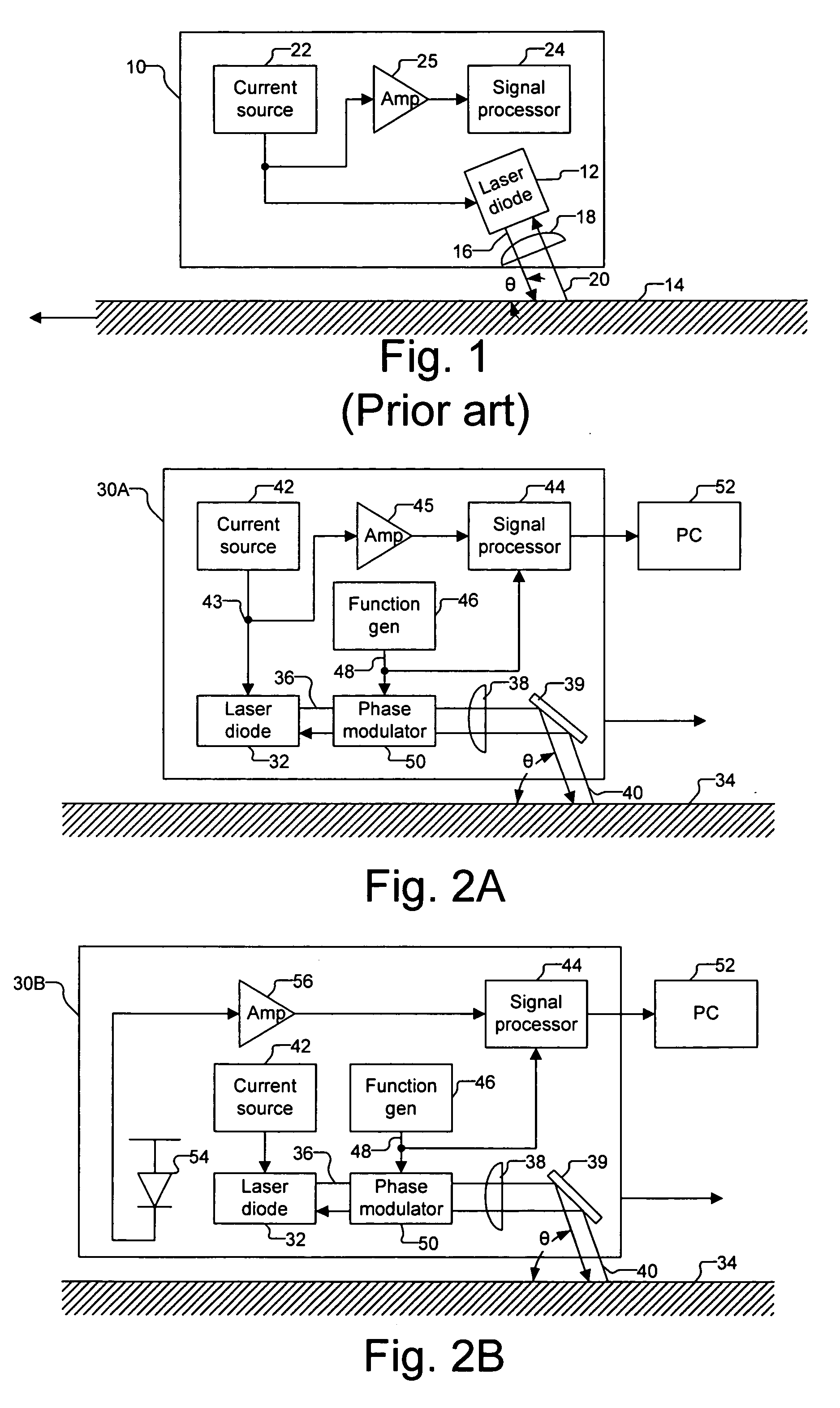Optical navigation based on laser feedback or laser interferometry
a laser feedback and optical navigation technology, applied in the field of optical mouse, can solve problems such as power consumption of ic chips
- Summary
- Abstract
- Description
- Claims
- Application Information
AI Technical Summary
Benefits of technology
Problems solved by technology
Method used
Image
Examples
Embodiment Construction
[0009]FIG. 1 illustrates a conventional laser Doppler velocimeter (LDV) 10 that uses the optical self-mixing property of a semiconductor laser diode 12 to detect the velocity of a moving surface 14. Semiconductor laser diode 12 emits light 16 focused by a lens 18 onto moving surface 14. Moving surface 14 scatters a portion of light 16, shown as backscattered light 20, back into the laser cavity at a Doppler shifted frequency. The interference between light 16 inside the laser cavity and backscattered light 20 results in a fluctuation of the light intensity with a beat frequency that is equal to the differences of the two light frequencies. The difference is provided by the following formula: Δ v=2v cos θλ,(1)
where Δν is the frequency difference between light 16 and backscattered light 20, ν is the speed of moving surface 14, θ is the angle of the laser beam direction relative to the velocity of the stationary surface 14, and λ is the wavelength of the laser light.
[0010] Wh...
PUM
 Login to View More
Login to View More Abstract
Description
Claims
Application Information
 Login to View More
Login to View More - R&D
- Intellectual Property
- Life Sciences
- Materials
- Tech Scout
- Unparalleled Data Quality
- Higher Quality Content
- 60% Fewer Hallucinations
Browse by: Latest US Patents, China's latest patents, Technical Efficacy Thesaurus, Application Domain, Technology Topic, Popular Technical Reports.
© 2025 PatSnap. All rights reserved.Legal|Privacy policy|Modern Slavery Act Transparency Statement|Sitemap|About US| Contact US: help@patsnap.com



